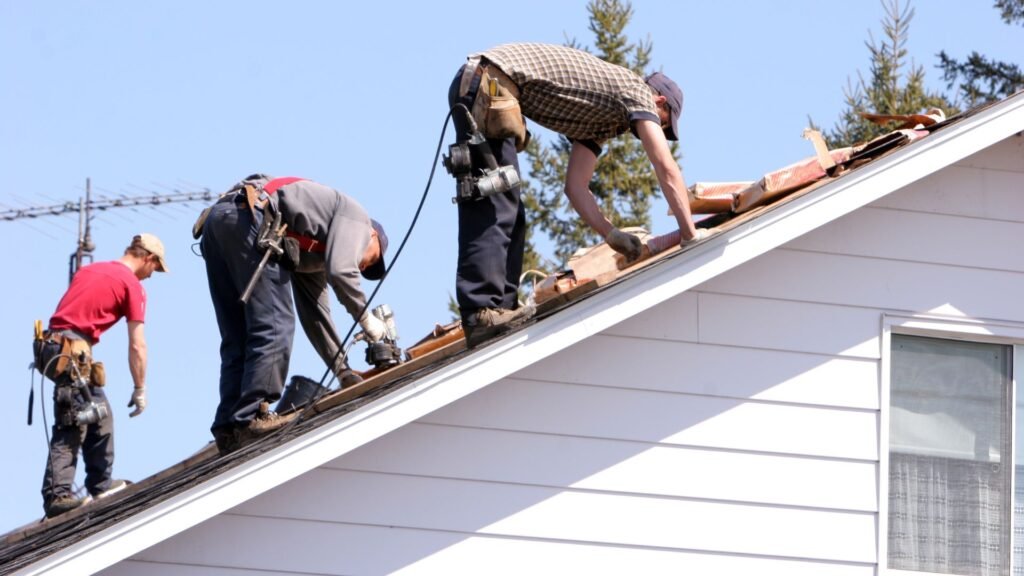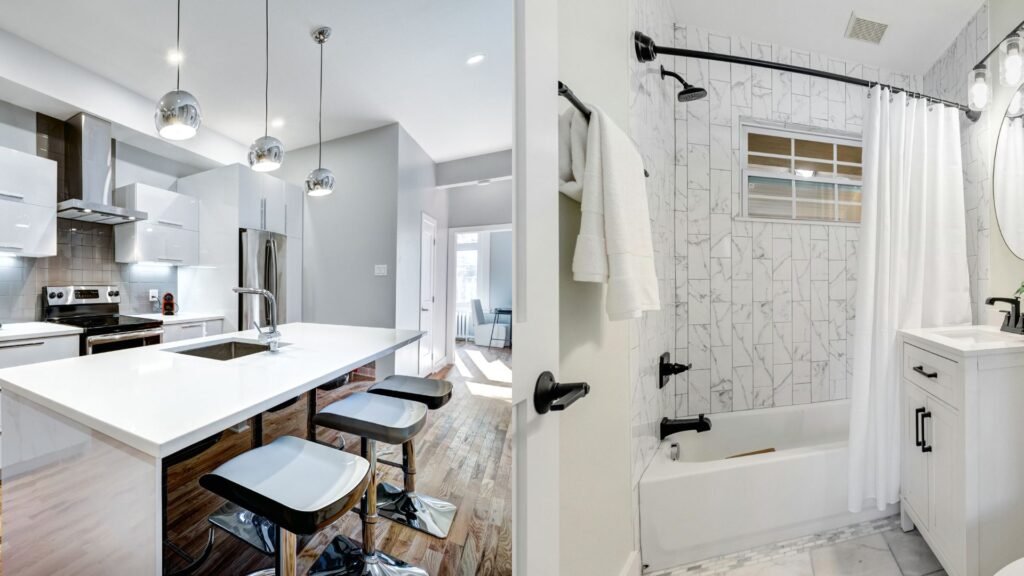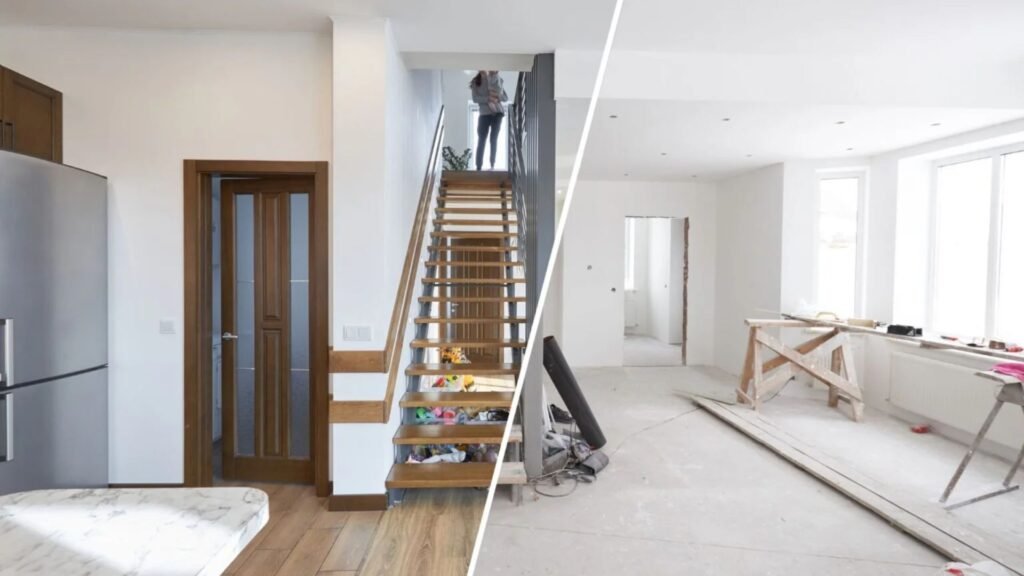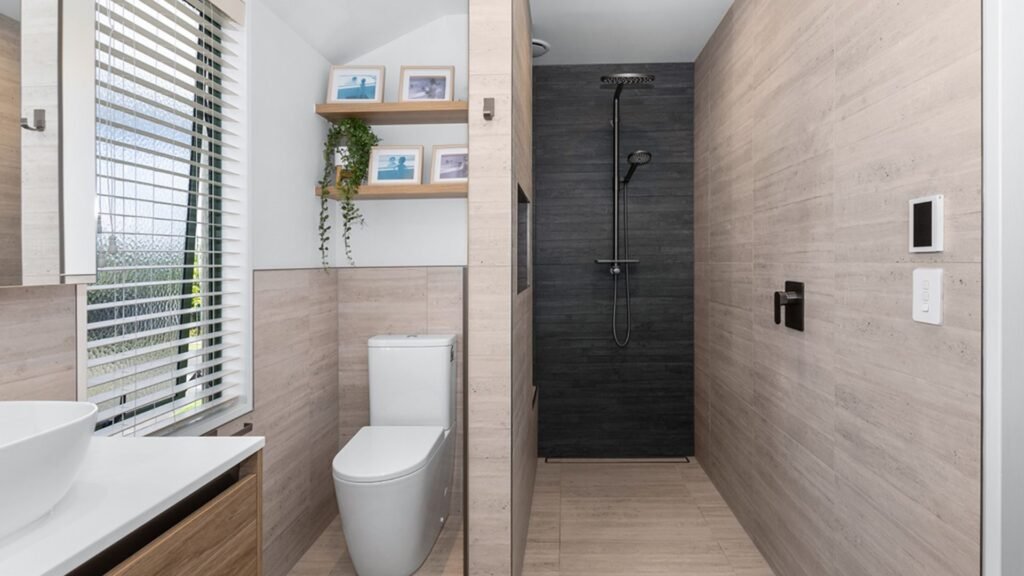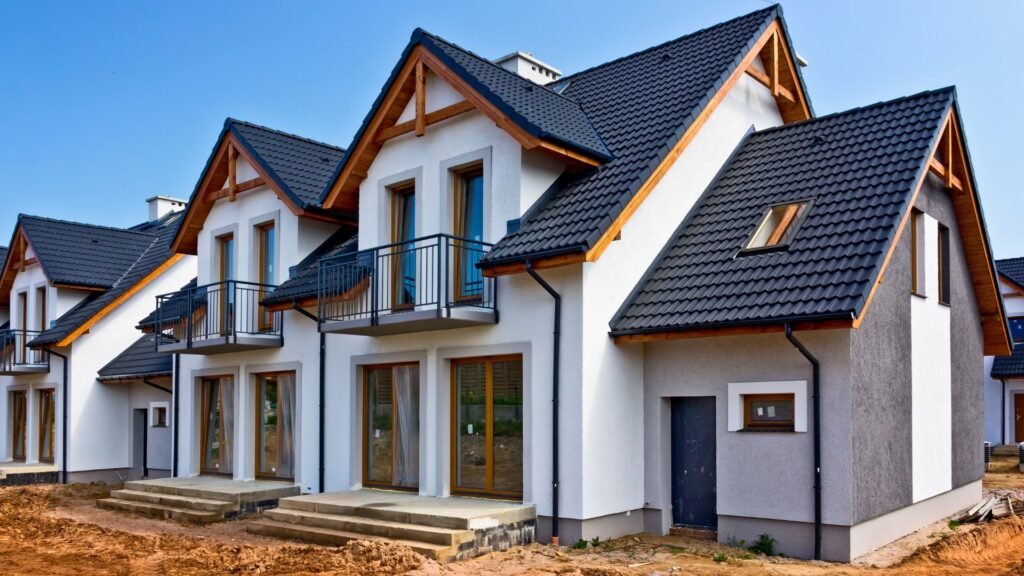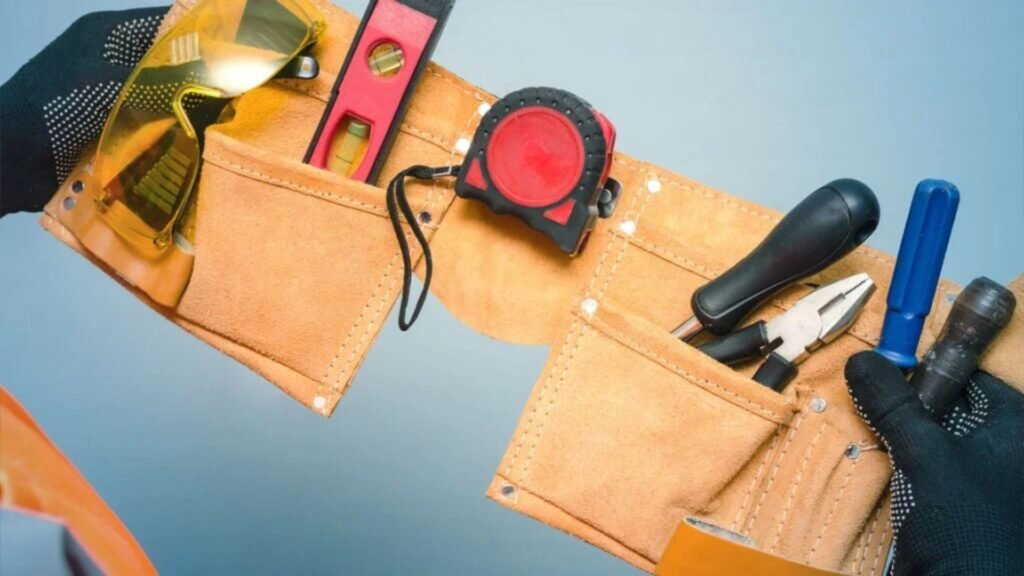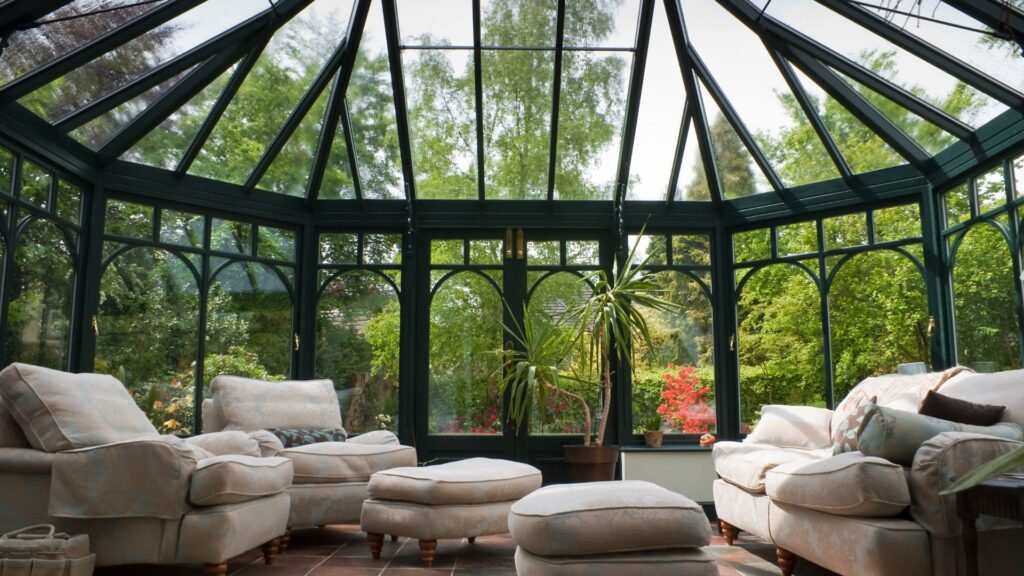Welcome to your complete guide on the cost to reroof a house in Kapiti. Whether your roof is leaking, rusting, or simply past its prime, understanding the real cost before starting is key. Roofing prices can vary widely across the Kapiti Coast depending on size, materials, and labour rates. In this post, we’ll break down local reroofing costs, explain what drives the price, and share practical ways to save money while keeping your home safe and weatherproof. If you’re planning a roof replacement, this guide will help you make confident, informed choices.
The average cost to reroof a house in Kapiti ranges from $15,000 to $35,000, depending on your roof size, materials, and condition. Metal roofing is a popular choice for coastal homes due to its durability and resistance to salt air. Always compare local quotes to get the most accurate estimate for your property.
Table of Contents
What Is Reroofing
Reroofing is the process of adding a new layer of roofing material over your existing roof to improve its strength, appearance, and protection against the elements. It’s often seen as a practical and more affordable way to extend the life of your current roof without completely removing what’s already there. When done correctly, reroofing helps seal small leaks, enhances insulation, and gives your home a refreshed look without the cost of a full replacement.
While reroofing and roof replacement may sound similar, they are not the same. Reroofing adds a new layer on top of your existing roof structure, while a full roof replacement involves tearing off the old materials down to the decking before installing an entirely new system. Replacement is necessary when the roof is severely damaged or has multiple layers that can no longer hold up. Reroofing, on the other hand, is ideal when the existing roof is still structurally sound but showing signs of wear, like faded color, light rust, or minor leaks.
Homeowners in Kapiti often choose to reroof because of the region’s unique coastal environment. The salty air, frequent winds, and seasonal rains gradually wear down roofing materials faster than in inland areas. Metal roofs may start to corrode, while tiles can loosen or crack over time. Many homes in Kapiti are also older, which means their roofs are reaching the end of their natural lifespan. Reroofing gives these homes renewed protection and helps maintain property value without the high expense of a full replacement.
Reroofing is a smart way for Kapiti homeowners to stay ahead of costly repairs while keeping their houses safe, dry, and looking fresh. If your roof is still in fair condition but starting to age, this may be the right time to consider a reroof before minor issues become major problems.

Average Cost To Reroof A House In Kapiti
If you are planning a roof replacement, understanding the average cost to reroof a house in Kapiti can help you budget confidently and avoid surprises. On average, homeowners in the Kapiti Coast can expect to spend between NZD $15,000 and $35,000 for a full reroofing project. This range covers most standard homes and accounts for variations in roof size, materials, and existing roof condition.
The cost to reroof a house in Kapiti depends on several factors. Smaller homes with simple roof designs tend to fall on the lower end of the range, while larger or more complex roofs will require more materials and labour. For example, a small 100-square-metre home using Longrun metal roofing might cost around $12,000 to $18,000, while a medium-sized 150-square-metre home using tiles could range from $18,000 to $28,000. For large homes over 200 square metres, especially those using asphalt shingles or premium materials, costs can exceed $35,000.
Here’s a simple breakdown of average reroofing costs in Kapiti:
| Roof Size | Material | Estimated Cost (NZD) |
| Small (100 m²) | Longrun metal | $12,000–$18,000 |
| Medium (150 m²) | Tile | $18,000–$28,000 |
| Large (200 m²+) | Asphalt shingle | $25,000–$35,000+ |
The variation in pricing also reflects local market differences. In Kapiti, roofing costs may differ slightly from nearby areas like Wellington due to local contractor rates, supply availability, and weather conditions. Coastal exposure means many homeowners prefer durable materials such as Colorsteel or Longrun metal, which are better suited to resist salt air and high winds. These materials can increase upfront costs but offer longer-term value and fewer maintenance issues.
When comparing reroofing prices, it’s best to request detailed quotes from local Kapiti roofing contractors. Each property is unique, and professional roofers can assess structural conditions, insulation needs, and weatherproofing requirements to provide an accurate estimate. Always check that your quote includes materials, labour, removal of old roofing, and site cleanup to avoid hidden charges.
In the end, investing in a quality reroof is about more than just the price. A well-installed roof improves your home’s protection, comfort, and long-term value. Taking time to understand local pricing and choosing trusted Kapiti roofers ensures your home stays safe, secure, and ready for the coastal weather for many years to come.

Key Factors That Affect Reroofing Costs
When planning to reroof your home in Kapiti, understanding what drives the price can help you budget wisely and avoid surprises. Every home is different, and several key factors influence how much you’ll pay for a new roof. Below are the main elements that affect reroofing costs, explained in plain language with practical examples.
Roof Size And Shape
Your roof’s size is one of the biggest cost indicators. A larger roof requires more materials, more labour, and more time to complete. Roof shape also plays a major role.
- Simple designs like a single-pitch or gable roof are faster to work on and cost less.
- Complex designs with multiple angles, dormers, or steep slopes take longer and require extra safety measures, which increases the total price.
For example, reroofing a small 100 m² home might cost around $12,000 to $18,000, while a large, multi-level property could easily exceed $30,000.
Roofing Materials
The type of material you choose affects both upfront cost and long-term value. In Kapiti’s coastal climate, durability is key.
- Metal roofing (Colorsteel or Longrun) is a local favorite. It handles salt air, high winds, and rain well. It’s mid-range in price but low in maintenance.
- Concrete or clay tiles provide a traditional look and last decades, but they’re heavier and more expensive to install.
- Asphalt shingles are budget-friendly and easy to replace, though they don’t last as long in harsh coastal conditions.
Each material comes with trade-offs between price, longevity, and maintenance needs, so consider your budget and how long you plan to stay in your home.
Labour And Local Rates
Labour is a major part of reroofing costs. In Kapiti, prices may vary depending on the season, local demand, and the number of qualified roofers available.
When demand is high or materials are limited, contractors may charge more. On the other hand, getting quotes during quieter months can sometimes save you money. Always compare at least three quotes from local professionals to get a fair idea of the market rate.
Roof Condition
If your existing roof has structural issues, expect a higher cost. Damage such as rotting timber, cracked tiles, or water-stained insulation often requires extra work before the new roof can go on.
Repairing these problems ensures your new roof lasts longer and performs better, but it adds to the overall price. For instance, replacing damaged framing or underlay could add several thousand dollars to your project.
Access And Safety
Roof accessibility directly affects labour time and cost. Easy-to-reach single-story homes cost less to reroof because materials and equipment can be moved quickly.
Steep roofs, multi-level houses, or homes surrounded by trees or obstacles require scaffolding and additional safety equipment. This not only extends the timeframe but also raises the total cost due to extra setup and compliance requirements.
Weather And Climate
Kapiti’s weather can influence both scheduling and cost. Frequent rain, strong winds, or unexpected storms can delay projects, pushing up labour time and expenses.
Roofers often plan around forecasts, but unpredictable weather still adds risk. Choosing the right season for reroofing can reduce these delays. Late spring and early summer often provide the best balance of dry conditions and contractor availability.
Knowing what affects the cost to reroof a house in Kapiti helps you make smarter decisions and plan your budget effectively. Each home has its own challenges, but by understanding these factors—size, materials, labour, condition, access, and weather—you can choose the best approach for your property and avoid hidden costs. Investing in a quality reroof now means stronger protection, better value, and peace of mind for years to come.
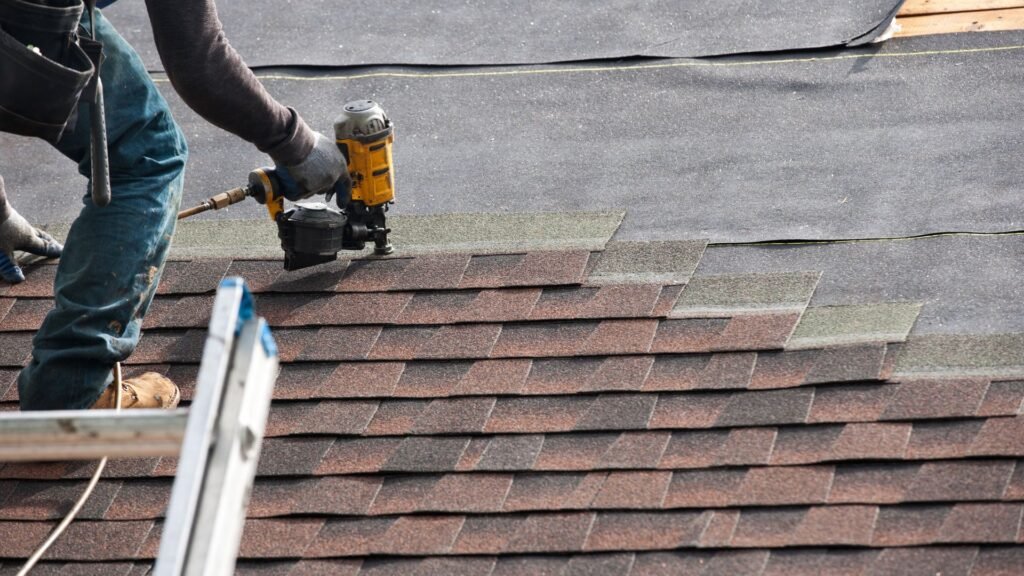
Comparing Roofing Materials: Pros, Cons, And Costs
Choosing the right roofing material can make a big difference in how well your home stands up to Kapiti’s coastal climate. The salt air, high winds, and changing weather mean you need a roof that’s both durable and suited to local conditions. Below, we’ll look at the most common roofing materials used in Kapiti homes—how much they cost, how long they last, and what kind of maintenance they need.
Metal Roofing (Colorsteel Or Longrun)
Metal roofing is one of the most popular options for homes in Kapiti. It’s known for its strength, light weight, and ability to handle the region’s windy, coastal environment.
Pros:
- Resistant to rust, corrosion, and salt air when properly coated
- Lightweight, which reduces stress on your home’s structure
- Long lifespan of 30 to 50 years with minimal maintenance
- Great for water collection systems and energy efficiency
Cons:
- Can be noisy during heavy rain if not insulated well
- Initial cost may be higher than cheaper materials like asphalt
- Minor dents may occur from debris or hail
Cost:
Metal roofing such as Colorsteel or Longrun typically costs between $120 and $180 per square metre, including installation.
Maintenance Tips:
Clean the roof at least once a year to remove salt and debris. Check for scratches in the coating to prevent rust from forming.
Concrete Or Clay Tiles
Concrete and clay tiles are known for their traditional look and durability. Many older Kapiti homes feature this style because of its timeless appearance and solid performance.
Pros:
- Long lifespan of 40 to 60 years when maintained properly
- Excellent insulation properties, keeping homes cooler in summer
- Fire-resistant and great for long-term investment
Cons:
- Heavier than other materials, sometimes requiring structural reinforcement
- More expensive to install and repair
- Can crack under pressure or if walked on
Cost:
Expect to pay $160 to $220 per square metre for concrete or clay tiles, depending on style and labour.
Maintenance Tips:
Inspect tiles annually for cracks or moss buildup. Replace damaged tiles promptly to prevent leaks or structural issues.
Asphalt Shingles
Asphalt shingles are a budget-friendly choice that appeals to homeowners wanting a simple, quick reroofing solution. They’re common in many parts of New Zealand but less so in coastal areas due to weather exposure.
Pros:
- Affordable upfront cost
- Easy and quick to install
- Available in many colors and styles
Cons:
- Shorter lifespan of 15 to 25 years
- Can deteriorate faster in salty or windy environments
- May require more frequent repairs compared to metal or tile roofs
Cost:
Asphalt shingles cost around $90 to $130 per square metre, making them one of the most affordable roofing materials available.
Maintenance Tips:
Keep gutters clean and remove any debris buildup. After strong winds, check for missing or loose shingles.
Slate Or Premium Roofing Materials
Slate and other premium materials are the luxury choice for homeowners who want both beauty and long-term durability. These roofs can last for generations when installed by experienced professionals.
Pros:
- Exceptional lifespan, often 70 to 100 years or more
- Stunning natural appearance that enhances property value
- Extremely weather-resistant and fireproof
Cons:
- High initial cost and complex installation
- Very heavy, requiring strong roof support
- Limited availability of skilled installers in smaller regions like Kapiti
Cost:
Premium materials such as slate or stone-coated steel can range from $250 to $400 per square metre, depending on quality and design.
Maintenance Tips:
Inspect the roof periodically for loose or broken tiles. Hire qualified specialists for repairs to avoid damaging the material.
Which Roofing Material Is Best For You?
Your ideal roofing material depends on your budget, location, and how long you plan to stay in your home.
- If you want low maintenance and strong performance in coastal conditions, metal roofing is often the best choice.
- For classic style and longevity, clay or concrete tiles work well if your structure can handle the weight.
- Homeowners looking for short-term affordability may prefer asphalt shingles.
- If you value lifetime durability and aesthetics, slate or premium options are worth the investment.
Selecting the right roofing material for your Kapiti home isn’t just about appearance—it’s about durability, weather resistance, and long-term value. By weighing the pros, cons, and costs of each option, you can make an informed decision that protects your home for decades. A well-chosen roof not only enhances your property’s look but also ensures peace of mind every season.
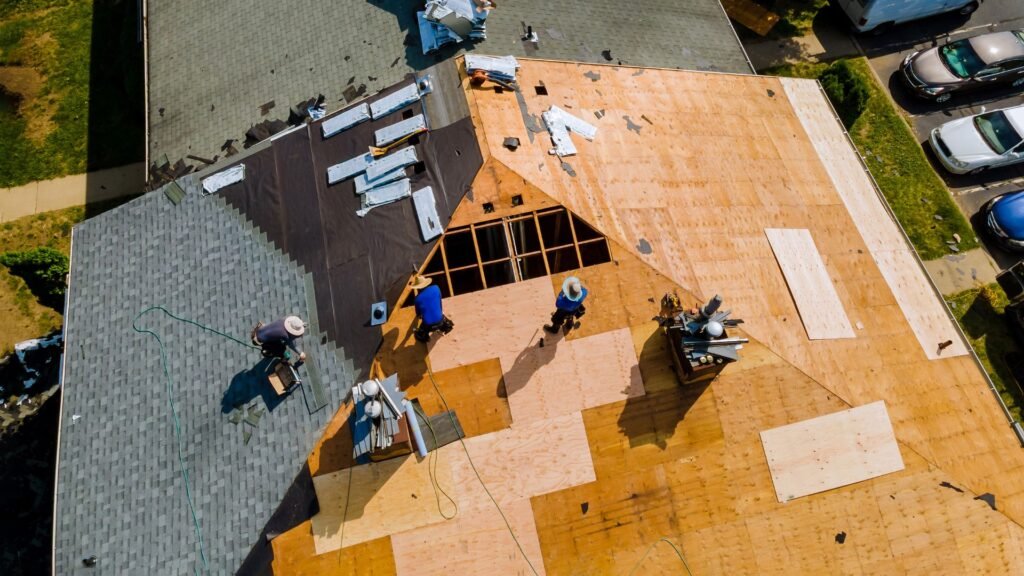
Signs It’s Time To Reroof Your Home
Your roof protects everything underneath it—your family, furniture, and the structure of your home. Over time, exposure to Kapiti’s coastal weather can wear it down. Knowing when to reroof can prevent costly water damage and keep your home safe and comfortable. Here are the most common signs that it might be time for a roof replacement.
- Persistent Leaks
If you notice water stains on your ceilings or walls after rain, your roof may no longer be watertight. Small leaks can turn into bigger problems fast, damaging insulation, electrical wiring, and interior walls. Reroofing ensures your home stays dry and prevents hidden rot or mold growth from spreading. - Curling Or Broken Tiles
Roof tiles that curl, crack, or break are a clear sign of aging. They no longer provide full coverage and let moisture seep in. In Kapiti’s windy conditions, loose tiles can also blow off easily. Replacing damaged sections might help for a while, but widespread tile damage often calls for a full reroof. - Rust, Corrosion, Or Moss Buildup
If your metal roofing shows rust spots or corrosion, it’s losing its protective coating. Over time, this weakens panels and causes leaks. Moss or lichen growth also traps moisture, accelerating decay. A professional roofer can inspect these areas to determine if cleaning, patching, or reroofing is the best solution. - Rising Energy Bills
A roof in poor condition allows air to escape and heat to enter. This forces your heating or cooling system to work harder, raising energy costs. A new, properly sealed roof improves insulation, regulates temperature, and reduces energy waste—helping you save money year-round. - 20+ Years Since Last Replacement
Most roofs have a lifespan of 20 to 30 years, depending on the material and maintenance. If yours is nearing that age, it’s wise to plan for a replacement before major problems develop. A new roof adds value to your property and offers peace of mind during Kapiti’s wet and windy seasons. - When To Call A Professional
If you’ve noticed any of these warning signs, don’t wait until the next big storm hits. Schedule an inspection with a trusted local roofer in Kapiti. They can assess your roof’s condition, provide a detailed quote, and help you decide whether repairs or a full reroof are the smarter investment.
A well-maintained roof doesn’t just keep you dry—it protects your entire home. By paying attention to early warning signs and acting quickly, you’ll extend your roof’s life, avoid expensive damage, and keep your Kapiti home secure for years to come.

How To Get An Accurate Roofing Quote In Kapiti
When planning to reroof your home, getting an accurate roofing quote in Kapiti is one of the most important steps. A detailed quote helps you understand exactly what you’re paying for and prevents unexpected costs later. Many homeowners make the mistake of choosing the cheapest offer without checking what’s included, which often leads to hidden fees or low-quality materials. Taking time to review and compare quotes ensures your reroofing project stays within budget and delivers long-lasting results.
Start by asking for a complete breakdown of materials, labour, waste disposal, and warranties. These four parts determine both the cost and quality of your roof. Ask your contractor what type of materials they plan to use, including the brand, grade, and colour. For Kapiti homes, materials like Colorsteel or Longrun metal are ideal because they handle the coastal climate well. Labour should include the full scope of work—from removing the old roof to installing the new one. Disposal costs for old roofing materials and site cleanup should also be listed clearly to avoid surprise charges. Finally, confirm whether the quote includes warranties for both materials and workmanship. A good warranty can save you thousands in future repairs.
It’s smart to get at least three local quotes before making your final decision. Each contractor may have different pricing, materials, and work methods. Comparing quotes side by side gives you a clear idea of what’s standard for your area. Look beyond the total price—focus on what’s included, who’s doing the work, and the timeline. A slightly higher quote from a reputable roofer can often mean better value and fewer problems down the road.
Before choosing a roofer, take time to check reviews and certifications. Search for roofing companies in Kapiti with verified customer feedback, strong local reputations, and proper trade licenses. Reliable roofers are transparent about their experience, show previous projects, and are willing to explain their pricing. This helps you avoid unreliable contractors who might rush the job or use subpar materials.
If you’re comparing the cost to reroof a house in Kapiti, always ask for a detailed breakdown that outlines every part of the job. This small step will help you make a confident, informed choice and ensure you get the best value for your investment.
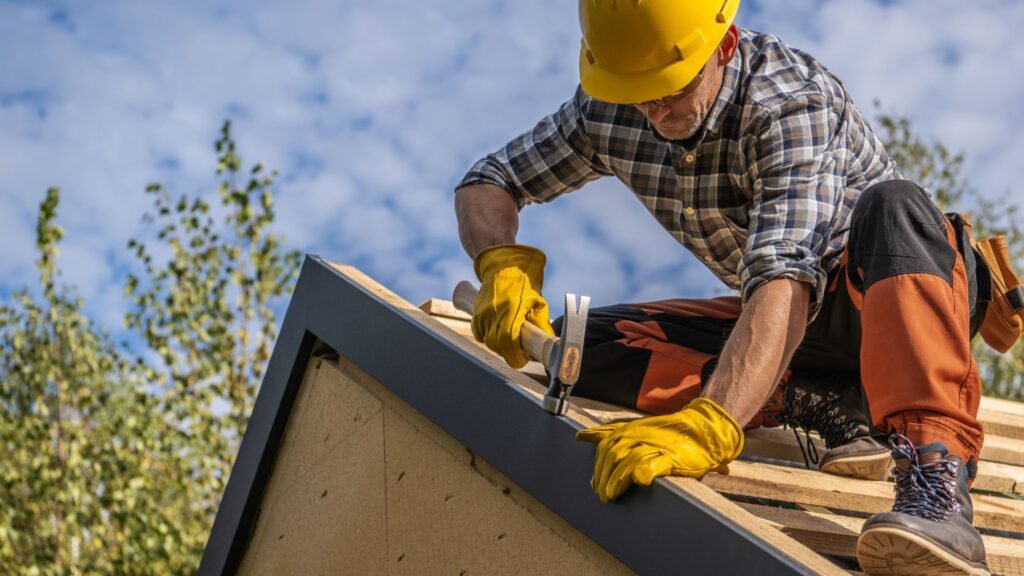
Money-Saving Tips For Reroofing
Reroofing your home in Kapiti is a big investment, but there are smart ways to manage costs without cutting corners. Careful planning, good timing, and informed decisions can help you save thousands while still ensuring quality and durability.
- Schedule Work During Off-Peak Seasons
Roofing demand tends to rise during warmer months when the weather is stable. If you schedule your reroofing project during the cooler or off-peak seasons, many contractors offer more flexible pricing and faster availability. In Kapiti, late autumn or early spring often bring lower competition for roofing services. You’ll not only save money but also get the job done more quickly before the busy summer months. - Choose Durable Materials To Reduce Long-Term Maintenance
It’s tempting to go for cheaper materials upfront, but that can cost more later. Investing in high-quality roofing like Colorsteel or longrun metal saves you from frequent repairs and replacements. Durable materials withstand Kapiti’s coastal weather, meaning you’ll spend less on maintenance and more time enjoying peace of mind. Think of it as paying for long-term protection, not just a short-term fix. - Maintain Gutters And Flashings Regularly
Many roof issues start with neglected gutters and flashings. When debris builds up, water backs up and damages roofing materials. Regular cleaning and inspections can prevent leaks and rot, extending your roof’s life. Schedule seasonal maintenance or hire a local roofing specialist for an annual check-up. This small habit can help you avoid expensive repairs later. - Consider Partial Reroofing If Only One Area Is Damaged
If your roof is generally in good shape, you might not need a full reroof. Partial reroofing can be a cost-effective option when damage is isolated to one side or section. For example, if strong coastal winds have affected only one roof slope, replacing that section can save money while still maintaining your home’s overall protection. - Reuse Existing Structure If Possible (When Safe)
When the roof frame and underlay are still sound, you can often reuse them. This reduces both material and labour costs. Before deciding, have a roofing professional assess whether your structure is solid and free from moisture damage. Reusing the existing structure works best for modern homes where the base is strong enough to support a new roof.
Saving money on reroofing doesn’t mean compromising quality. With smart scheduling, durable materials, and regular maintenance, you can protect your Kapiti home for decades without overspending. Always consult local roofing experts for tailored advice—they know how to balance affordability with long-term value.
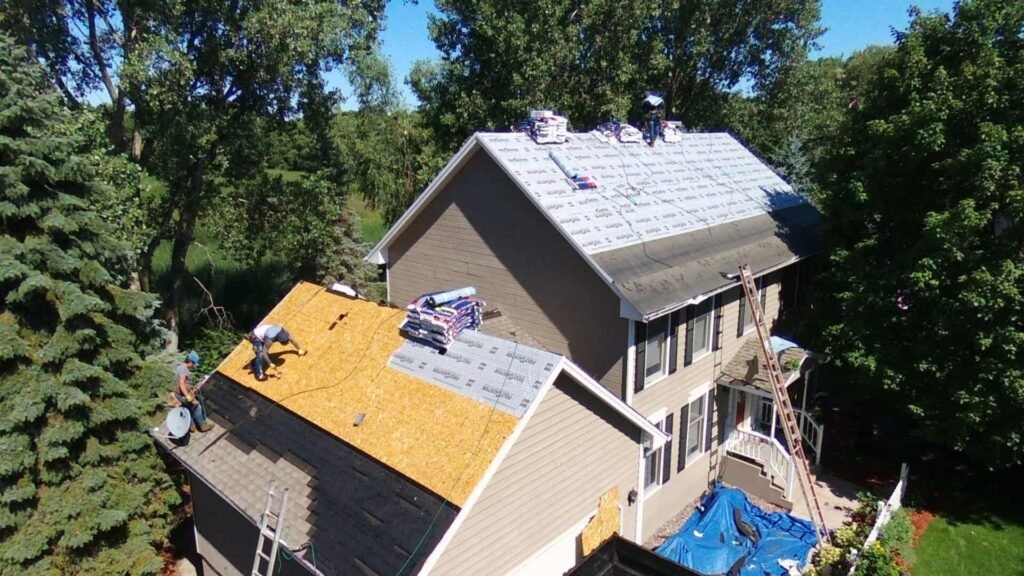
Reroofing And Insurance/Warranty Considerations
When planning a reroofing project in Kapiti, it’s easy to focus on the cost and materials. But one important step many homeowners overlook is checking their insurance and warranty coverage. Understanding what’s protected can save you thousands in the long run and prevent unexpected financial stress if something goes wrong.
Start by reviewing your home insurance policy. Most insurance providers cover roof damage caused by sudden events like storms, falling trees, or wind damage. If your roof was damaged by age, rust, or neglect, it’s usually not covered. To confirm your eligibility, contact your insurer and explain the condition of your roof. Ask whether your policy covers full reroofing or only specific repairs. Taking photos before and after the reroofing process can also help document your claim if you need to file one later.
Next, ask your roofing contractor about their warranty terms. Reliable roofing companies in Kapiti usually offer two types of warranties: product warranties and workmanship warranties. A product warranty covers the roofing materials against defects, such as corrosion or cracking. A workmanship warranty covers the quality of the installation itself. This means if there’s a leak or installation issue, the contractor should fix it at no extra cost during the warranty period. Make sure to request both in writing before signing any contract.
Keeping all project documentation is just as important. Save your quotes, invoices, contracts, and warranty certificates in one place. These records not only protect you if a dispute arises but also boost your home’s resale value. Potential buyers appreciate clear proof that your roof was recently replaced and properly covered under warranty. It gives them confidence in the quality and long-term reliability of the home.
Taking these steps ensures your reroofing investment is fully protected. Always confirm your insurance coverage, secure written warranties, and keep every document safe. It’s the smartest way to protect both your roof and your peace of mind.
Ready to find out exactly how much your reroof will cost? Get a free, no-obligation roofing quote from trusted Kapiti roofing specialists today.
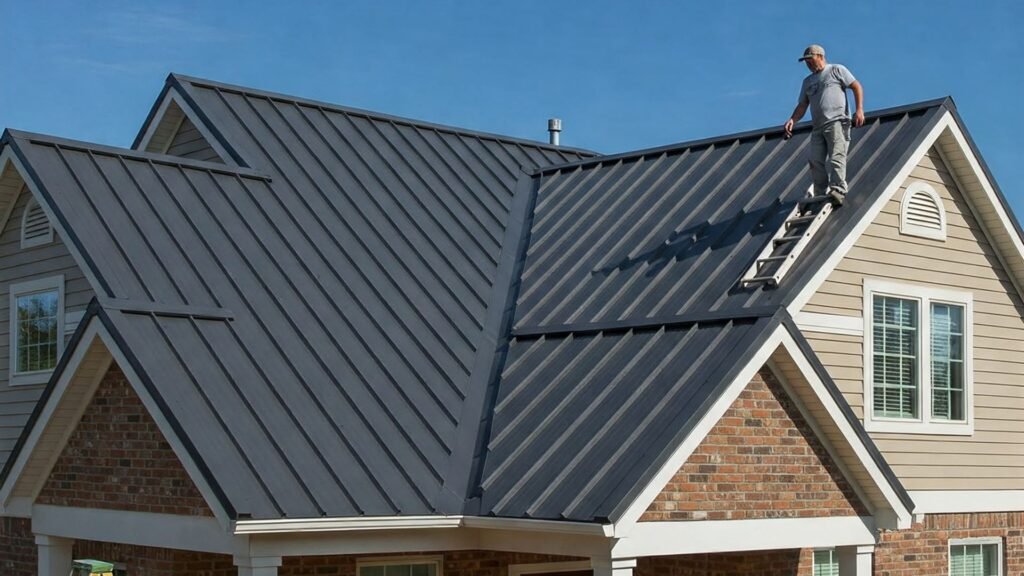
References
- Cost To Reroof A House In NZ – Roofmate
https://roofmate.co.nz/cost-to-reroof-a-house-in-nz/ - Understanding Reroofing Costs In New Zealand – Chemcare
https://www.chemcare.co.nz/articles/reroofing-costs-nz - Roof Replacement And Reroofing Services In Kapiti – JS Roofing
https://www.jsroofing.co.nz/cost-reroof-house-kapiti - NZ’s Roof Replacement Costs Revealed – OneRoof
https://www.oneroof.co.nz/news/nzs-roof-replacement-costs-revealed-46339 - Roofing Cost Per Square Meter In NZ – Roofing Whangarei
- https://roofing-whangarei.co.nz/roofing-cost-per-square-meter-nz/
FAQs: About Cost To Reroof A House In Kapiti
What is the average cost to reroof a house in Kapiti?
The average cost to reroof a house in Kapiti ranges between $15,000 and $35,000. The price depends on roof size, material, and labour costs.
What factors affect the reroofing cost in Kapiti?
Key factors include roof size, material type, roof condition, design complexity, and local labour rates. Coastal conditions can also influence pricing.
What roofing materials are best for Kapiti homes?
Metal roofing, such as Colorsteel or Longrun, is popular in Kapiti due to its durability against coastal winds and salty air.
How long does it take to reroof a house?
Most reroofing projects take 3–7 days, depending on the roof size, weather conditions, and the contractor’s schedule.
Can I reroof only part of my house?
Yes, partial reroofing is possible if damage is limited to one section. However, a full reroof often ensures better protection and longevity.
Is reroofing covered by insurance?
Insurance may cover reroofing if the damage was caused by storms, wind, or accidental events. Wear and tear is usually not covered.
How often should I replace my roof in Kapiti?
On average, roofs last 20–30 years depending on materials. Metal roofs can last up to 40 years with proper maintenance.
How can I reduce the cost of reroofing?
Schedule the work during off-peak seasons, maintain your roof regularly, and compare quotes from multiple Kapiti roofers to save money.
What’s the difference between reroofing and roof replacement?
Reroofing involves adding a new layer over existing shingles or metal, while a full replacement removes old materials before installing new ones.
How do I find reliable roofing contractors in Kapiti?
Look for licensed, well-reviewed roofers who provide written quotes, clear warranties, and references from local clients.
Conclusion
Reroofing your home is a big decision that deserves careful planning and the right balance between cost, quality, and long-term value. The cheapest quote might look appealing, but investing in durable materials and skilled workmanship will save you from expensive repairs later. Take time to compare options, ask detailed questions, and work with trusted roofing professionals in Kapiti who understand local conditions. Early planning gives you flexibility in scheduling, material choice, and budgeting, helping you avoid rushed decisions when leaks or damage appear. A well-built roof not only protects your home from wind and rain but also adds comfort and value for years to come. A strong roof keeps your Kapiti home safe, dry, and ready for many more summers.

